Growing plants with at home is nothing short of fun
A plant grow light is a source of artificial light with the spectral power distribution (SPD) and photosynthetic photon flux (PPF) tailored to the optimal needs of the plant being cultivated. LED grow lights are solid state lighting systems capable of delivering high photosynthetic photon efficacy (PPE) lighting with high spectral effectiveness. Horticulture lighting is the essential fuel for the increasing popularity of plant growth in residential settings. Growing herbs, vegetables, fruit, flowers and other plants at home is nothing short of fun.
Due to the coronavirus pandemic more people than ever are growing plants at home, taking it a great way to pass time while providing the family with fresh, tasty, and nutritious food. Consistent year-round production of vegetable and fruit in a controlled environment virtually eliminates seasonality and volatility of supply. In the United States, home growing is often associated with personal cultivation of cannabis plants, the legalization of which continues to spread across the country.
Light influences all aspects of plant biology
Light is used by plants both as a fuel for photosynthesis and as an environmental signal for developmental adaptation. Light is electromagnetic radiation composed of photons, which are small, discrete bundles of energy. Plants use energy from photons to generate high-energy electrons. These electrons are used to produce two high energy chemical products, namely NADPH and ATP. NADPH and ATP formed by the action of light are ultimately consumed in the assembly of carbon atoms (CO2 reduction) in organic molecules to make carbohydrates (sugars) and oxygen. The carbohydrates are then stored by the plant to be used for growth. This process takes place within the chloroplasts of the plant cells where photons are harvested by chlorophylls. However, chlorophylls absorb only photons of specific wavelengths.
The most important photoreceptor responsible for photosynthesis is chlorophyll A which l absorbs light mainly in the red and blue parts of the visible light spectrum with the main peaks of absorbance at 430 nm and 680 nm. Chlorophyll B is an accessory pigment that collects energy and passes it on to chlorophyll A. The absorption peaks of this pigment are in the red and blue ranges of the spectrum at wavelength 460 nm and 640 nm respectively.
Carotenoids are secondary metabolites and vital pigments that drive photosynthesis by transferring energy from the absorbed light to chlorophylls while protecting photosynthetic organisms from the harmful effects of excess exposure. The most common of these pigments, the carotenes and xanthophylls, absorb photons in the wavelength range from 400 nm to 550 nm. This absorbance range extends into extends into the green region, effectively covering the spectral range (500-550 nm) that chlorophylls react poorly. Electromagnetic radiation in the spectral range from 400 to 700 nanometers, which is absorbed by photoreceptors in the process of photosynthesis, is called photosynthetically action radiation (PAR).
Light provides environmental cue to plants
As plants are stationary they have evolved to read environmental cues from light through signal-transducing photoreceptors. These environmental cues trigger adaptive responses in plants to orchestrate and manipulate key stages of plant development. The ability to optimize resource-use efficiency and acclimate photosynthesis to available irradiance facilitates a wide range of specific physiological responses which include photomorphogenesis (plant anatomy), photoperiodism (effect of the length of dark and light periods on flowering), and phototropism (direction of growth). Three major groups of signal-transducing photoreceptors have been identified to mediate these responses: phytochromes, cryptochromes and phototropins.
The phytochrome photosystem exercises its power through two interconvertable forms of phytochromes, the inactive form Pr and the physiologically active form Pfr, which have their absorption peaks in the red at 660 nm and in the far-red at 730 nm, respectively. Red light drives conversion of Pr to Pfr whereas far-red light drives conversion of Pfr toward the Pr form. The prevalence of Pfr or Pr, which depends on the R:FR spectral ratio, can affect a number of developmental processes which include flowering induction, germination, stem elongation, leaf expansion, circadian rhythm entrainment and chlorophyll biosynthesis. A low red to far-red ratio causes the inactive form phytochrome (Pr) to dominate te biology of plant development. A shade avoidance response, which is of no benefit for most horticulture applications, is activated to elongate hypocotyls or stems and cause premature flowering in an attempt to out-compete neighboring plants and survive in low irradiance conditions. Low red:far-red ratios can also lead to reduced production of many secondary metabolites which play important roles in mediating defenses against pathogens.
Cryptochrome and phototropins are blue- and UV-A (ultraviolet A)-sensitive photoreceptors involved in mediating many important morphological responses. Cryptochromes regulate germination, elongation, pigment synthesis, entrainment of the circadian rhythms in flowering plants, sensing of magnetic fields, expansion of cotyledons, normal chlorophyll and chloroplast development, and enzyme synthesis Phototropins mediate stomatal regulation, phototropism, chloroplast accumulation, leaf flattening, and de-etiolation of the hypocotyl.
The dialogue between plant science and lighting technology
It is clear that the effective application of light is essential for multiple biological processes in the life cycle of plants. Within chloroplasts, chlorophylls and carotenoids absorb light to drive conversion of the photochemical energy from light into biological energy for plant metabolism and biomass production. The interactive network of signal-transducing photoreceptors, each of which detects irradiance at specific band of wavelengths, controls almost every aspect of growth and development, from germination all the way through to flowering and fruiting.
Natural sunlight is the cheapest source of energy available for plant growth and development but it is not always available in sufficient quantities and desired qualities. Horticulture lighting has long been implemented in crop production as a supplement to, or replacement for sunlight. However, traditional lighting technologies (high-pressure sodium, metal halide, fluorescent) have always had a limitation with regards to spectral manipulation. The fixed spectrum makes it impossible to tailor the light spectrum to the optimal needs of each growth stage or specific plant species. Moreover, high-intensity discharge (HID) lighting systems produce large amounts of radiated infrared (IR) energy. Achieving a very high photosynthetic photon flux density (PPFD) with HID lighting is thus limited by the distance that the light source needs to be kept from the plant canopy.
LED lighting addresses the need for both effectiveness and efficiency
The horticulture lighting industry has been undergoing a radical transformation fueled by tremendous advancements made in LED technology. LED lighting is set to play a dominant role in horticultural lighting due to its profound economic, performance, design and application benefits. Not only are LED lights a shining example of high efficacy, longevity and low maintenance, but they also move past the legacy functionality of providing spectrally dumb lighting to offer the new capability of spectral engineering.
The spectral power distribution (SPD) of light can be tailored to enhance production depending on plant species and growth stage and, in some products, can be actively controllable. The capability of precise spectral control allows to capitalize on spectral benefits suggested by photosynthesis response peaks and to drive photomorphogenesis and photoperiodism by targeting specific signal-transducing photoreceptors.
The ability to deliver SPD that is engineered to engage specific plant responses, combined with superior intensity controllability of LEDs, provides a large opportunity for optimize lighting for specific applications, enabling optimal plant photosynthesis for the largest yields and/or precise control of all aspects of plant development in the shortest time and in the most efficient way. LED horticulture lighting products can now readily achieve a PPE of greater than 3 µmol/J.
Absence of radiant heat in the electromagnetic radiation of LEDs allows light fixtures to be positioned much closer to the plants without overheating leaves. Beyond improvements to system efficacy, the ability to provide closer proximity lighting results in a significantly lighting application efficiency (LAE). The PPF from the LED luminaire can be harvested to a maximum to achieve a higher photosynthetic photo flux density (PPFD) than are possible with HID fixtures of the same output.
LED grow lights
LED grow lights for home cultivation applications come in various types which include, but not limited to, high power integrated systems, modular bar systems, light panels, tube lights, light bulbs, and light strips. These products are usually installed in grow tents, grow cabinets, and hydroponic grow systems. The selection of LED grow lights with regards to their scale, PPF, light distribution, and spectral composition depends on the type of plant being cultivated, the involved stages of growth (e.g., germination, clones/cuttings, vegetative, flowering, fruiting), and the mounting height.
It is important to provide plants with sufficient light to drive enough photosynthesis as this provides the energy and carbohydrates required for plant growth as well as the metabolic building block for the various biosynthetic pathways. During the various growth stages, the delivered PAR output has to be adjusted accordingly. For seedlings, it needs to be set low (200-400 PPFD). Plants in a vegetative state would usually require a middle range output (400-600 PPFD). Flowering stage plants have higher PAR requirements (600-900 PPFD). During flowering, cannabis plants require PPFD up to 1200 μmol/m²/s. To achieve this level of intensity, an LED grow light that is mounted 12” above the plant canopy should deliver a PPF of around 1900 μmol/s.
Action spectrum
While it’s necessary to supply plants with an adequate flux of radiation, providing photons in the spectral regions that are absorbed most efficiently by the targeted photoreceptors is just as important. Plants are most effective at absorbing red and blue photons for photosynthesis. Few plants perform well under 100% red or blue light. Photosynthetic rate under red light is higher than under blue light, but plants grown under blue-deficient light may have impaired plant morphology, which is characterized by reduced chloroplast development, thin leaves, and the formation of leaf intumescences.
The need for both red and blue light is well established, but there is less consensus on the appropriate ratios of red to blue light. A higher red to blue spectral ratio may contribute to increased biomass, taller plants, higher phenolic contents, activation of antioxidant system, extensive root development, increased luteolin and sinigrin concentrations, etc. Higher ratios of blue to red light promote vegetative growth, stomatal opening, plant compactness, flowering and fruit production, and accumulation of β-carotene and violaxanthin carotenoid levels. How home growers choose to balance the ratio of red to blue light will be based on the specific plant species being cultivated and their stage of growth.
While red and blue photons have the highest spectral effectiveness in activating chlorophylls, their ability to penetrate deep into the canopy is very limited. Green light penetrates deeper into the lower chloroplasts of plant tissues, further than red and blue light, and therefore provides additional photosynthesis in places where blue and red light cannot penetrate. It’s important to note that a variety of photoreceptors that are critical to plant development have absorbance wavelengths mostly outside the PAR region such as far-red and UV-A. The greatest use of far-red irradiation (wavelengths above 700 nm) in horticultural applications is to control flowering time. Inclusion of UV-A light may help strengthen the defense mechanisms of a plant by i.e., creating more secondary metabolites.
Spectral engineering
The spectrum of light emitted by LED grow lights can be tailored to meet horticultural lighting needs in several ways. The desired emission wavelength of an LED can be achieved by engineering the injection electroluminescence of the semiconductor die. Manipulating the band gap between a conduction band and a valence band of a semiconductor active layer can create narrow-band LEDs that emit light having a single color with typical bandwidths of a few tens of nanometers. The spectrum of light emitted by an LED can also be controlled by partially or completely converting the electroluminescence of a short-wavelength (blue or near-UV) LED using a phosphor wavelength converter. Phosphor-converted LEDs can be engineered to deliver broad spectrum emissions for more balanced photosystem stimulation. Tailored spectral output can also be generated by additive color mixing of several monochromatic LEDs, such as red, green, blue, amber (yellow), and cyan. This method allows to dynamically tune the emitted spectrum.
Most LED grow lights for home cultivation applications are designed as fixed spectrum systems. A full spectrum LED grow light typically incorporate a plurality of broadband phosphor converted LEDs and a small number of monochromatic LEDs which are used to supplement the spectrum. The LEDs are operated by a dimmable driver which often comes with multiple output channels for independent control of each individual LED channels.

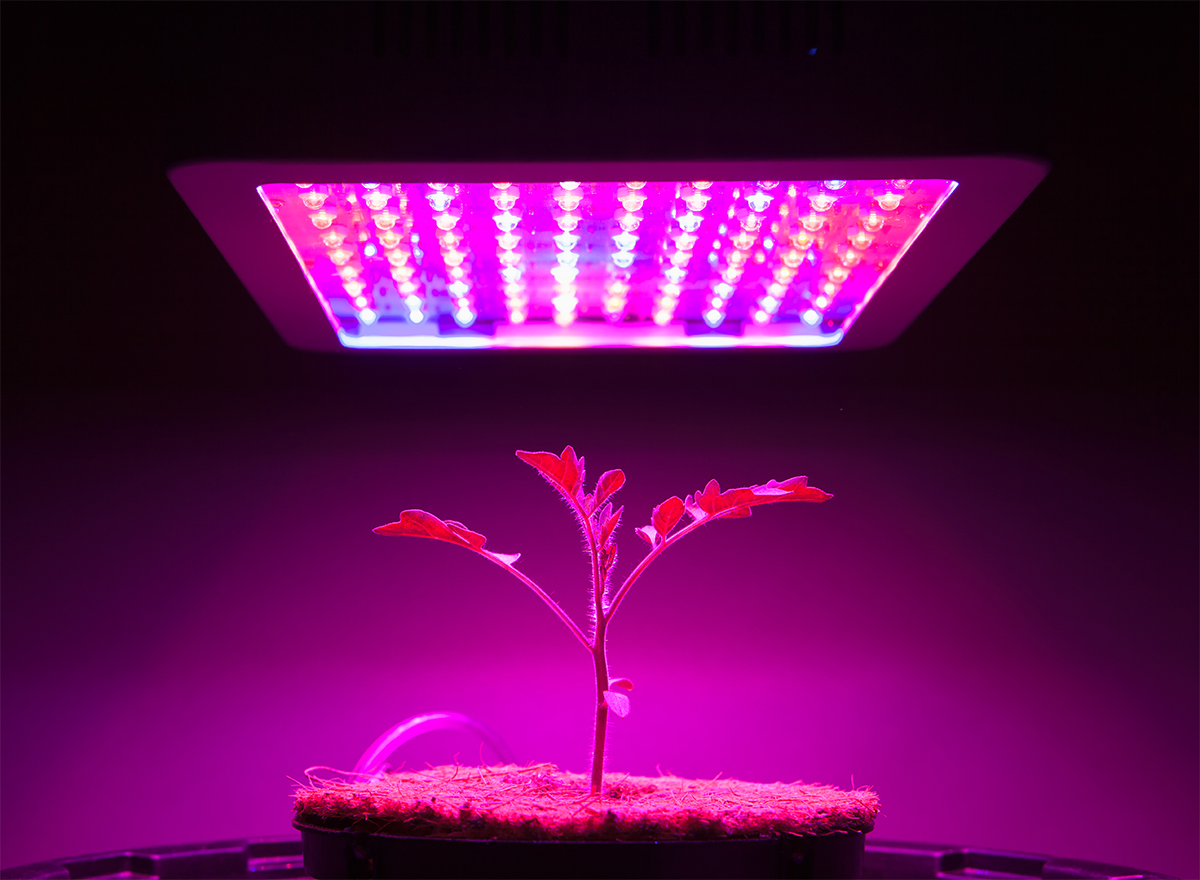
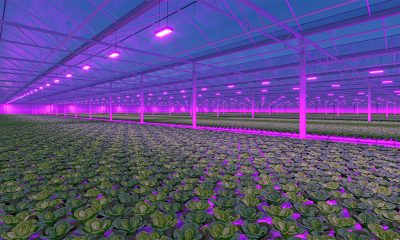
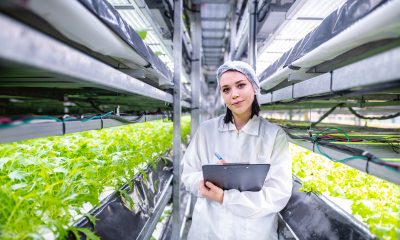
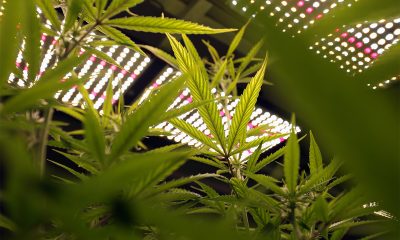
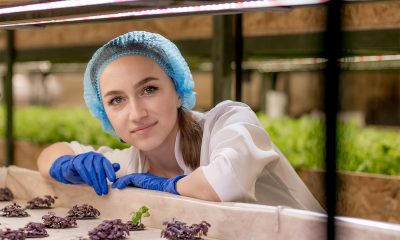
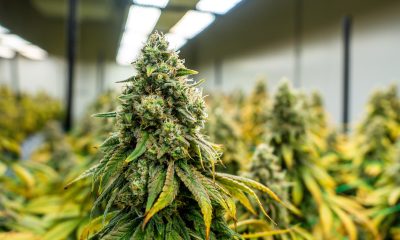
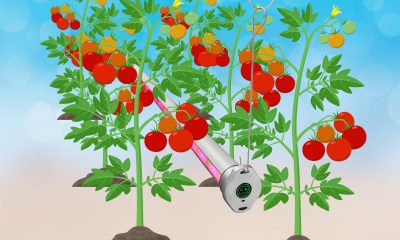
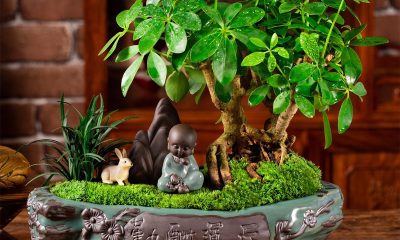
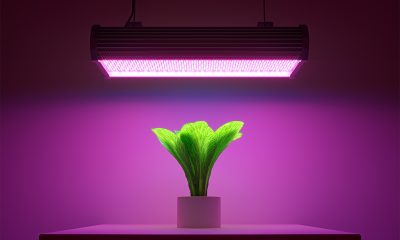
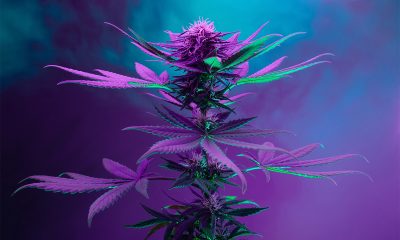





Loading...